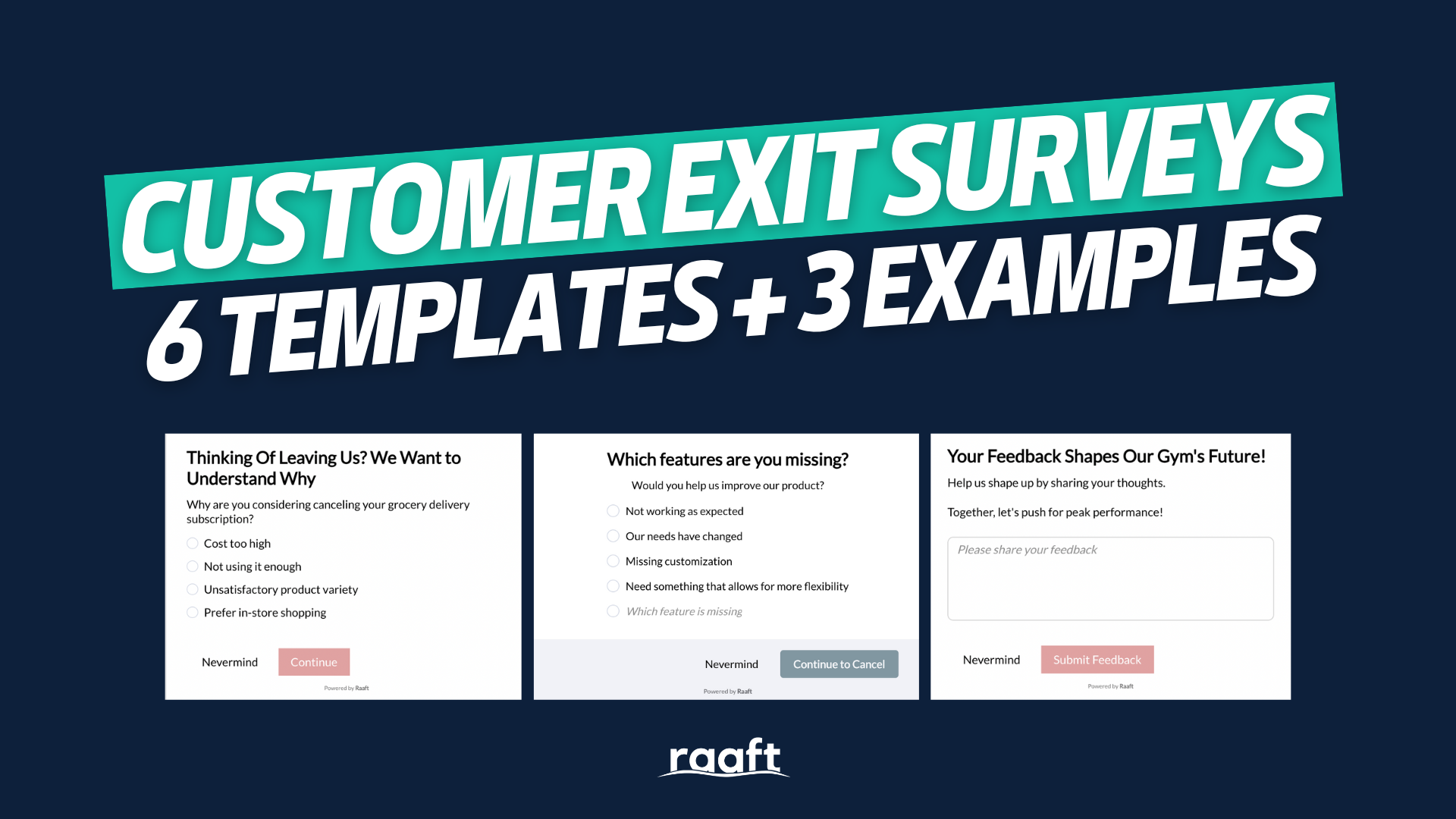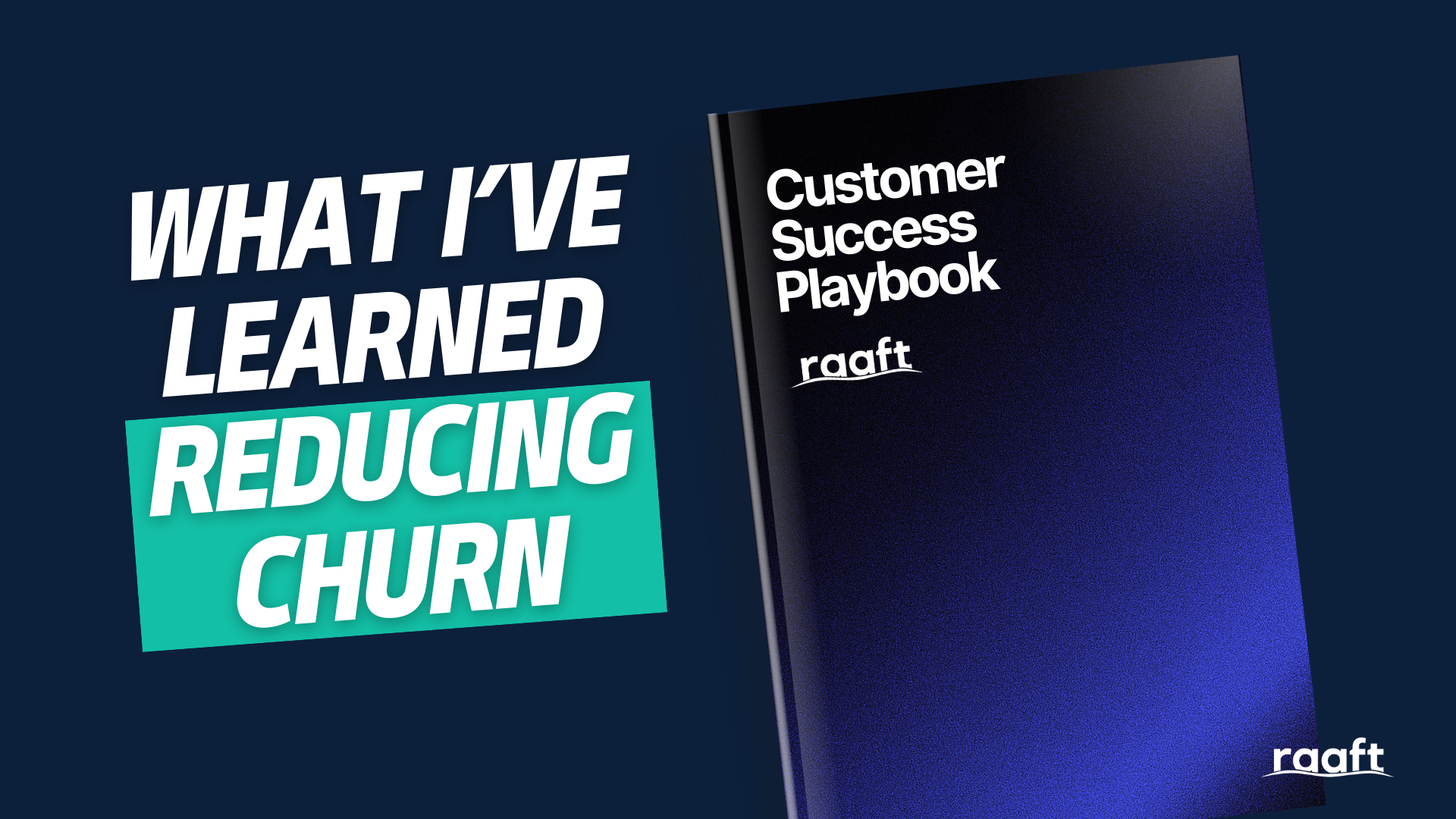
I've developed a customer success playbook that has completely shifted how I look at churn.
For a long time, I treated customer success like a series of disconnected tasks.
One day I’d be checking in with customers, the next I’d be trying to save an account that was already halfway out the door.
I was all over the place.
There wasn’t much structure, and while some customers stayed, I found that far too many slipped through the cracks.
I learned that having a structured process not only saved me a ton of time but also helped me systematically spot risks before they turned into cancellations.
I now like to think of it as my safety net.
My Customer Success Playbook Is Actually Very Simple
A customer success playbook example doesn’t need to be a 50-page manual.
I want you to stay well away from creating lengthy strategy documents.
Mine started as a one-page document with key triggers and actions.
I’ve gradually refined it, and now it’s the foundation of how I run retention.
I use Raaft for cancellation flows, which gives me the data and insights to feed back into my playbook design.
Raaft shows me why people leave, and the playbook gives me the framework for how to act on that information.
Together, they create a feedback loop where I’m always improving.
A good customer success playbook example doesn’t need to be complicated.
I want you to focus on giving your team a clear path to follow when customers start showing warning signs of disengagement.
If you can create one simple system that people can actually stick to, you’ll see the compounding impact pretty fast.
The best customer success playbooks are those you can actually use every single day without friction.
So, to get the ball rolling, I’m going to outline your next five moves.
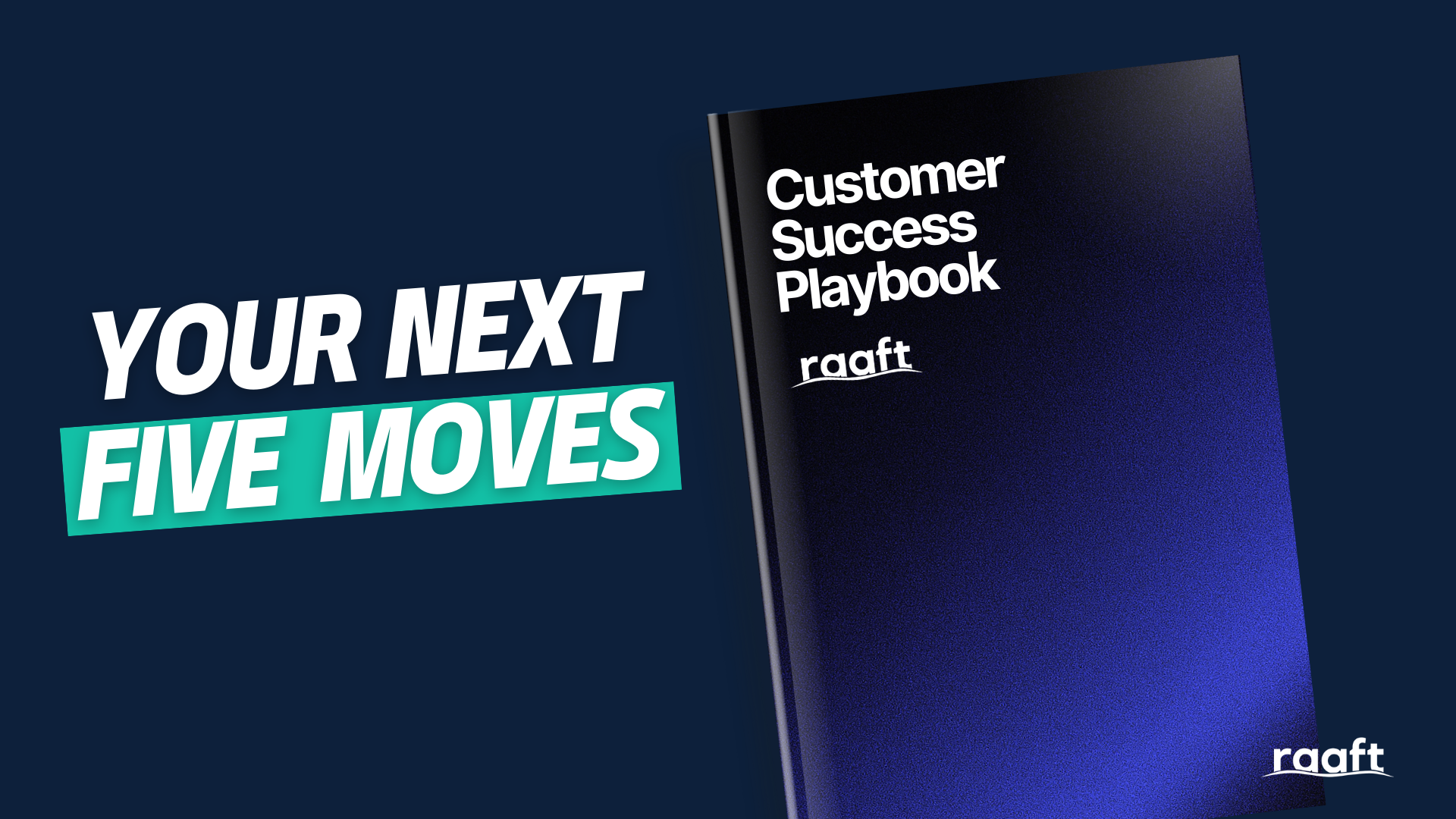
Here Are Your Next Five Moves
1 - Let's Get A Churn Mitigation Plan In Place
Do this immediately. Every customer success playbook needs a section on churn mitigation.
Customers rarely cancel without giving off signals first.
These signals might look like:
- Dropping usage
- Reduced logins
- Support tickets
A churn mitigation plan is essentially your early warning system, and it should tell you exactly how to respond when those signals appear.
Using Raaft, I can see why people cancel and then design proactive plays to address those reasons earlier.
For example, if a common reason for cancellation is “not seeing value,” I’ll add a play where my team points out measurable wins for that customer before they get frustrated enough to leave.
If “too expensive” is showing up often, I’ll test plays around offering feature education so the price feels justified.
This is a core part of my own customer success playbook example because, without a churn strategy, your playbook isn’t doing its job.
This is your reminder to focus on saving accounts that are slipping and preventing silent churn from creeping up.
2 - I Want You To Identify Three Disengaged Customers
The best customer success playbooks are built on real action.
So, I want you to take three disengaged customers right now and run them through your process.
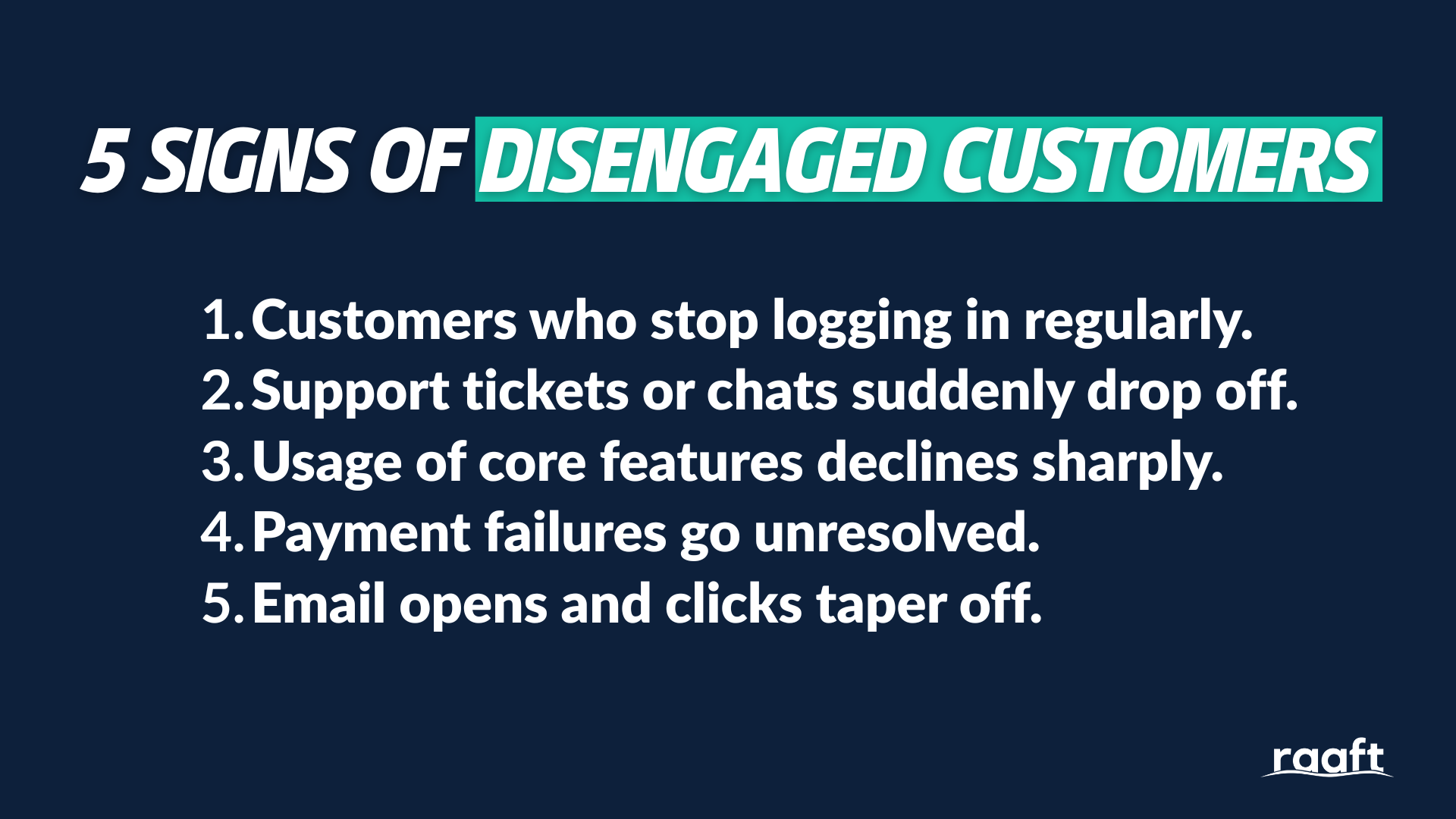
Don’t just make a list of plays. Total waste of time. You actually need to test them.
This might look like sending an email, scheduling a call, or pushing a few resources their way.
After you’ve done that, measure the response.
When I did this, I quickly realized how often disengagement was happening in silence.
Customers wouldn’t complain or raise their hands.
They would just quietly stop logging in until one day they canceled.
Raaft helped surface the problem by showing me “lack of usage” as a top cancellation reason.
My customer success playbook gave me the framework to address it: identify, engage, and win them back.
I’ve started to make a daily habit of this.
Every week, my team looks at three disengaged customers, and we work through the plays.
Sometimes it’s as simple as showing them a new feature they missed.
Other times, it’s jumping on a quick call.
This practice keeps the playbook alive and ensures we’re always testing.
3 - Find Opportunities To Point Out Customer Progress
A powerful customer success playbook example will always include moments of customer celebration.
Progress updates keep users motivated.
I think the reality is that customers don’t always see how much progress they’re making with your product.
I’ve found they get caught up in the day-to-day and forget what life looked like before they signed up.
I started doing this in a systematic way, and the results were pretty dramatic.
Customers who feel recognized for their progress are far less likely to consider canceling.
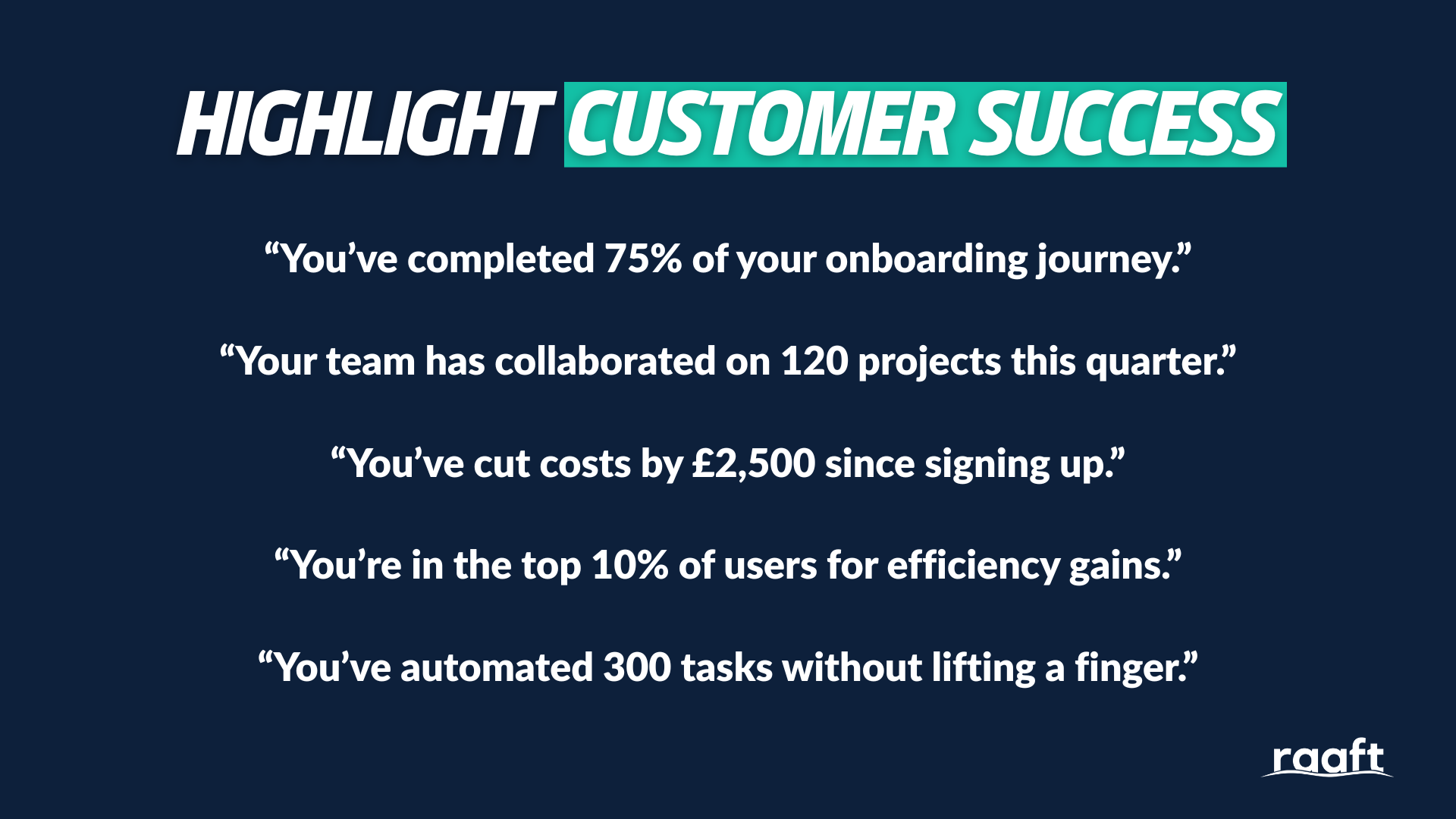
In my customer success playbook, we have a play where we regularly share usage milestones or outcomes. For example: “You’ve saved 40 hours this month using our tool.”
That small reminder reinforces the value my tool provides.
This is one of the simplest moves you can add to your own customer success playbooks.
Just take the data you already have and reframe it as customer progress.
It doesn’t require a huge budget or complex automation, but the key here is consistency.
When customers consistently see results, they stick, and you’ll see that play out.
4 - Share Some Useful Resources With New Users
The first 30 days are everything. I’m not exaggerating.
If your onboarding is weak, you’re already stacking churn risk.
The number one job of your onboarding is to get customers to experience value quickly.
If that doesn’t happen, the likelihood of churn skyrockets.
I make sure my customer success playbook includes scheduled resource sharing, especially in those early days.
I’ll send guides, videos, or links that help customers get quick wins.
Sometimes it’s a case study, other times I’ll just send a product walkthrough I’ve recorded on Loom.
The important thing is that it shortens the time to value.
Raaft gives me insights into cancellation reasons, which I then use to refine the resources I share.
If customers are canceling because they “don’t know how to use a feature,” that’s a signal my onboarding needs more coverage.
My customer success playbook example gets stronger every month by plugging those gaps.
This play not only reduces churn but also builds goodwill.
I believe customers appreciate it when you’re proactive in helping them succeed rather than waiting until they hit a problem. I’ve seen this happen time and time again.
5 - Review Your Onboarding Materials
I want you to take five minutes today to review your onboarding materials.
Your onboarding materials are your front line.
Every strong customer success playbook example has clear guidance on how to review and improve them regularly.
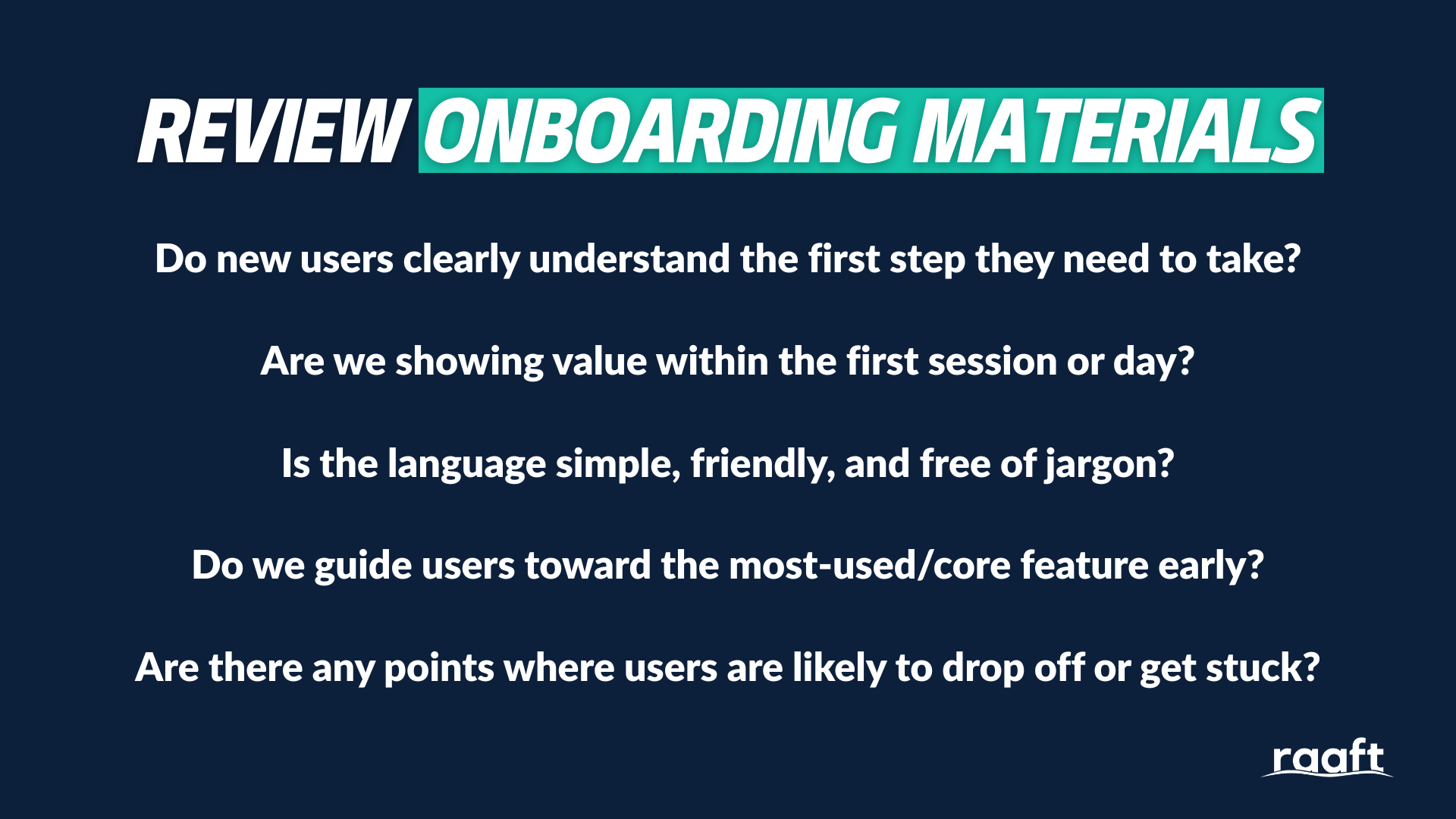
Most SaaS teams create onboarding once and then move on. Don’t do that.
Your product evolves, customer expectations shift, and what worked six months ago may now feel outdated.
Surely, it makes sense to take another read through your onboarding resources?
I discovered that some of my old resources were outdated, which meant customers weren’t getting the most relevant help.
Some videos I made referenced features we had replaced, and included the old UI.
A few of my guides assumed knowledge that new customers didn’t have.
I managed to significantly improve the onboarding experience by reviewing and updating these materials.
I’m now trying to make a habit of reviewing these regularly. Maybe once every few months or so.
Again, Raaft’s data on cancellation flows was invaluable for identifying what needed improvement.
If “confusing onboarding” or “couldn’t get started” shows up in cancellation reasons, that’s a flashing red light right there that your materials need work.
I now treat onboarding as a living asset which are tied directly to my customer success playbook.
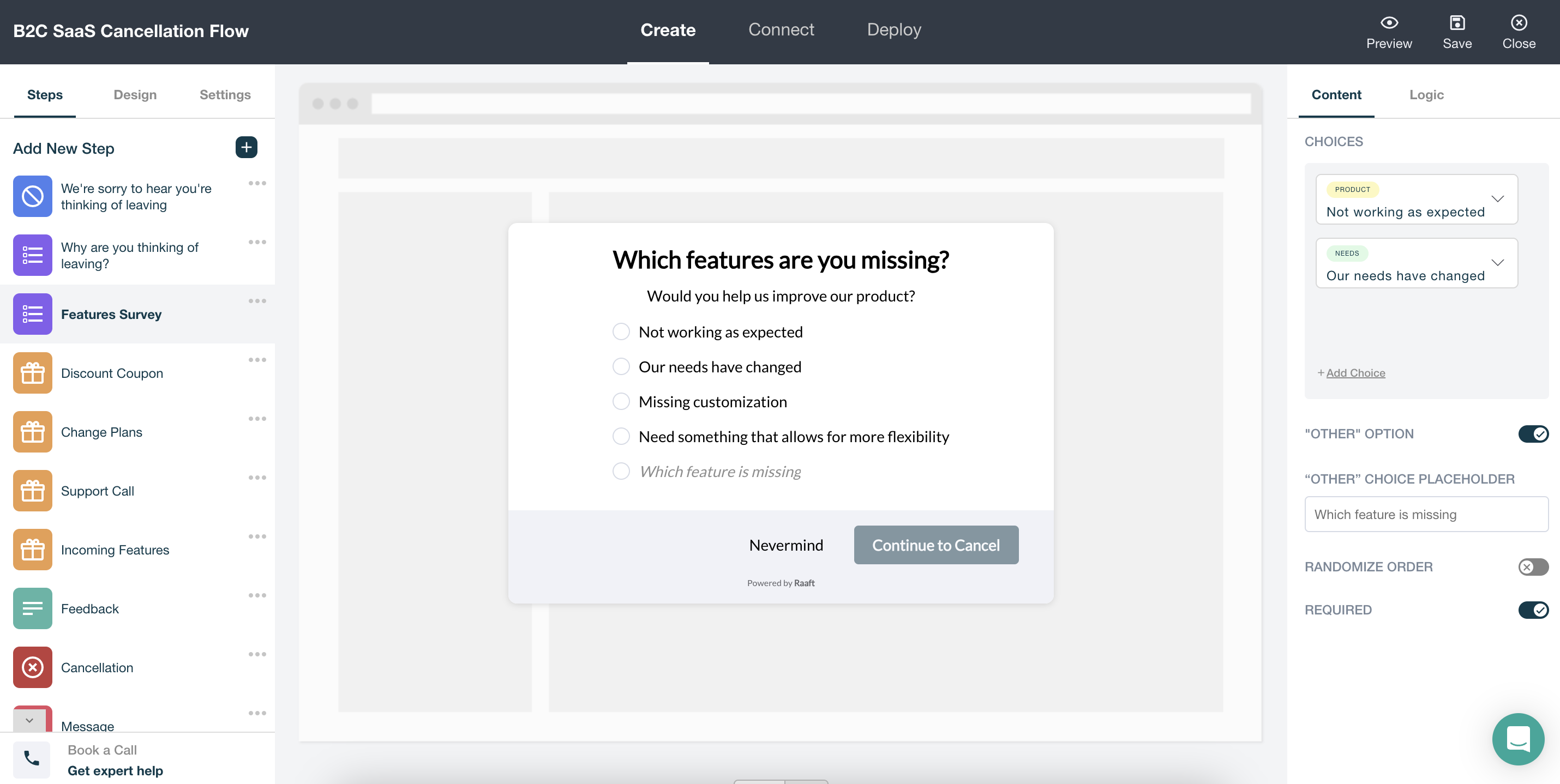
How To Build Your Customer Success Playbook
I want you to focus on simplicity above all else.
When I talk about building customer success playbooks, I always stress simplicity.
A customer success playbook example should show your team what to do at every stage of the customer lifecycle without adding unnecessary steps.
I like to think of it as your blueprint for retaining customers.
Start by mapping out the key stages of your customer journey.
Then, build plays for each stage: onboarding, engagement, progress recognition, and churn mitigation.
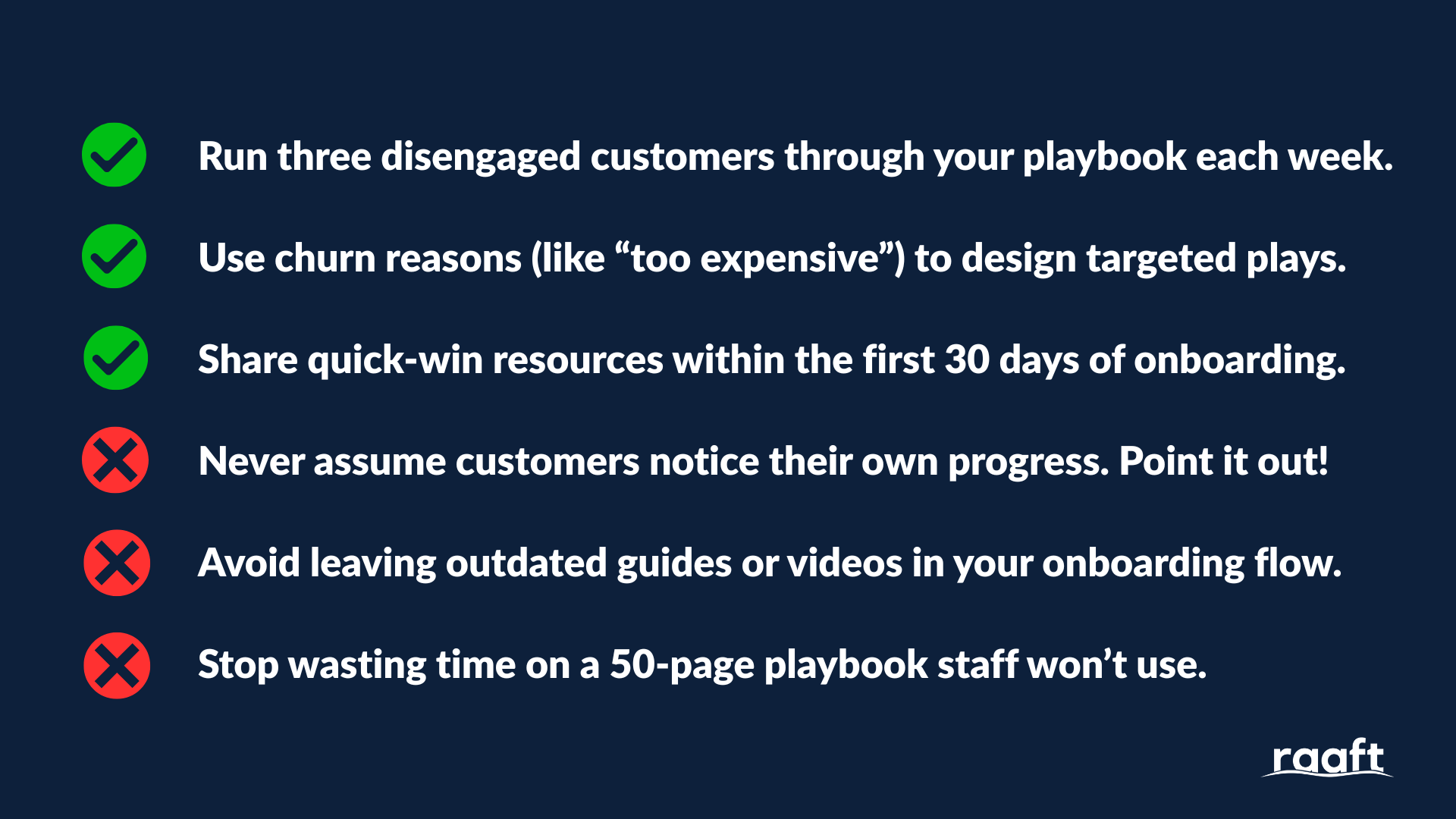
Each play should answer two questions: “When does this trigger?” and “What do we do?”
That way, there’s never any confusion when a customer hits a key milestone or starts showing churn risk signals.
I highly recommend using Raaft to capture real-world insights from cancellations and feed that directly into your updates.
The difference between a theoretical playbook and one that actually works is whether it’s based on customer reality.
The best customer success playbook examples are the ones grounded in data and refined through practice.
You may end up having a customer success playbook example specifically for enterprise clients, another for self-serve customers, and another for free-to-paid conversions.
Each example becomes a building block in your overall strategy.
I’ll leave you with this:
Customer success playbooks are non-negotiable if you want to reduce churn.
They’re worth every second you spend designing them because they provide clarity and consistency.
Sign up to Raaft for free today and begin making cancellation flows.
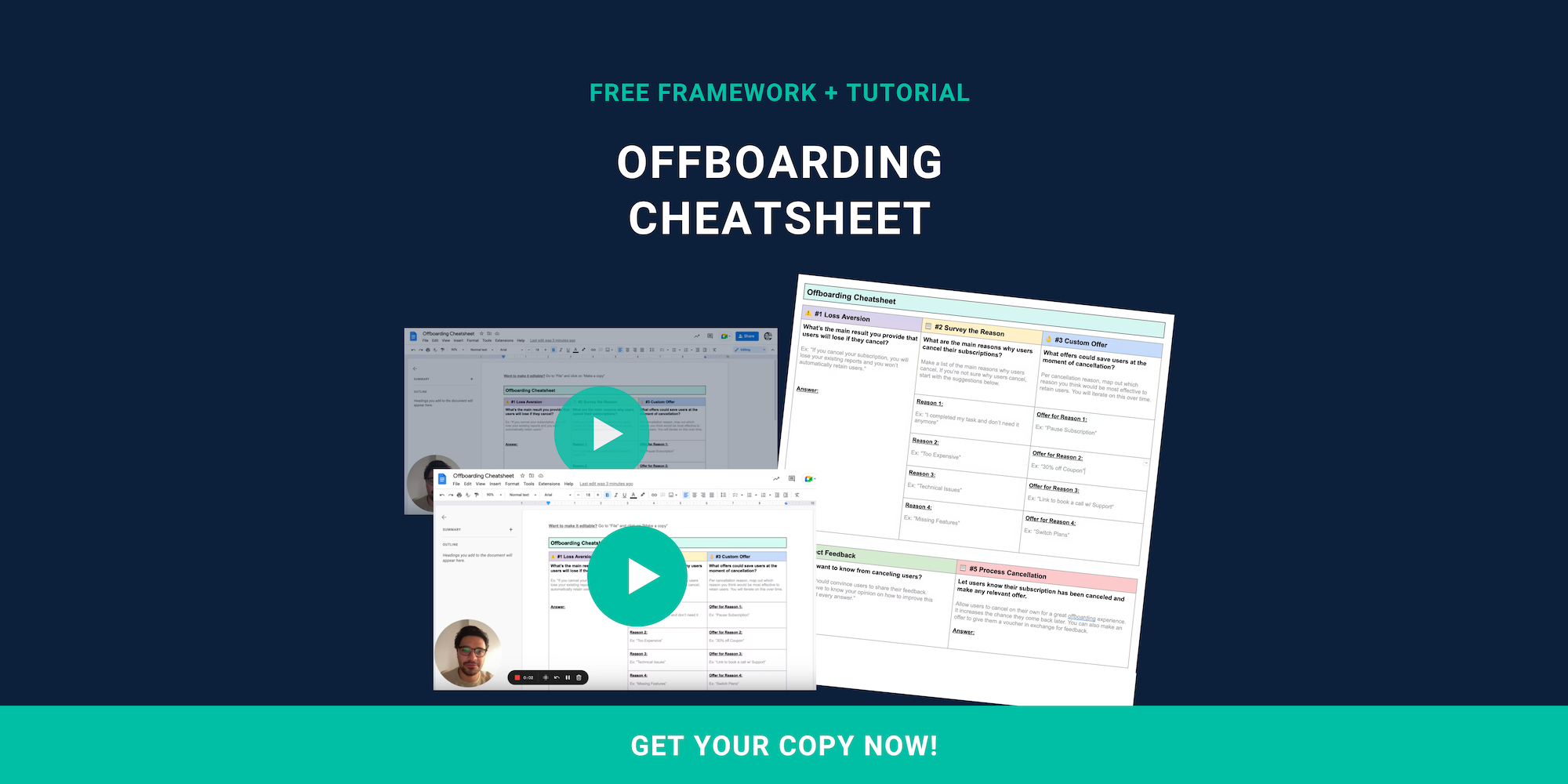
Offboarding Cheatsheet
This framework + video tutorial will help you design a better cancellation process.
Some of our featured articles

Adam Crookes

Adam Crookes

Miguel Marques
Customer Success insights in your inbox
Helping Founders and Customer Success Managers handle customer retention effectively.
We will only ever send you relevant content. Unsubscribe anytime.
